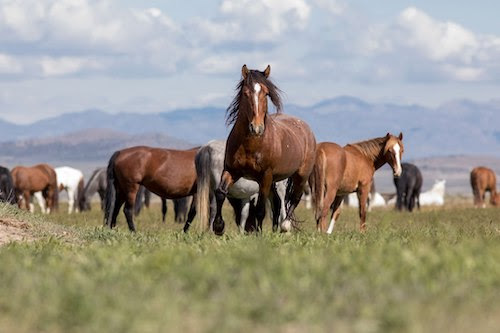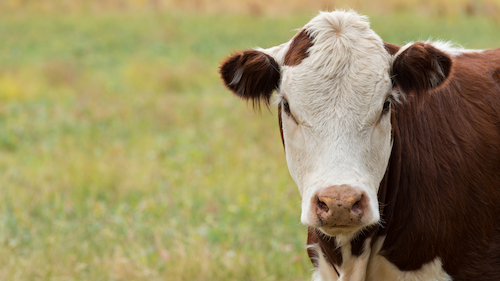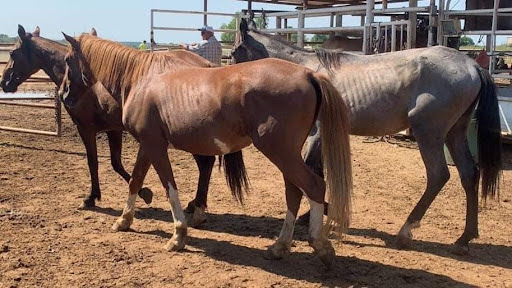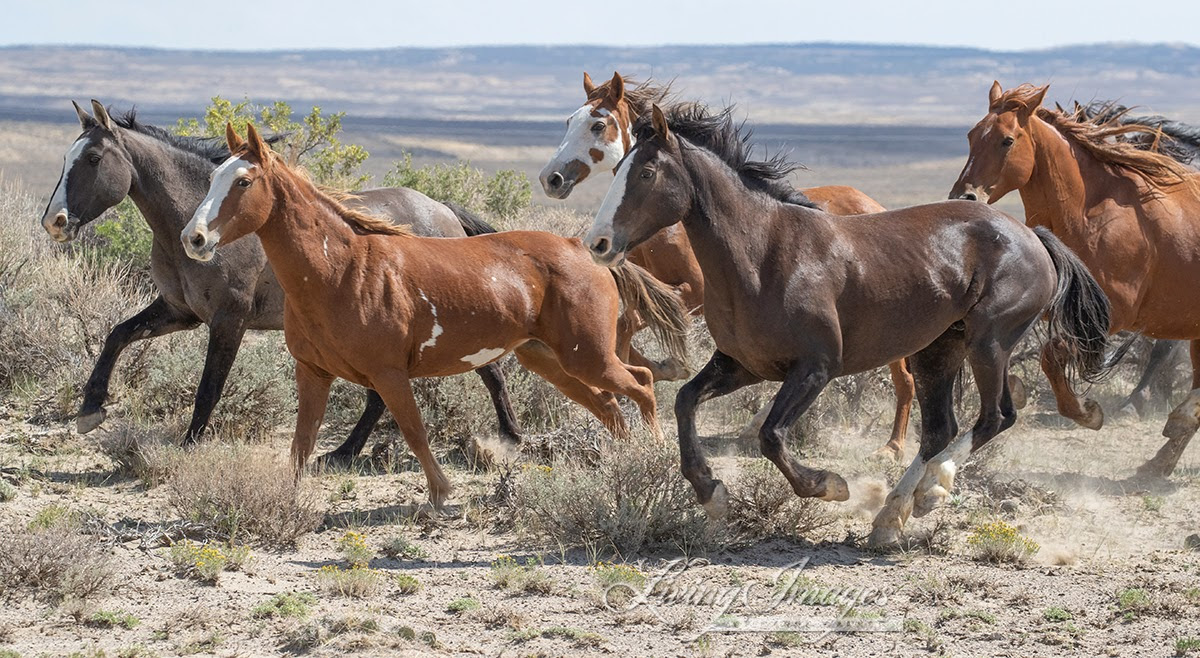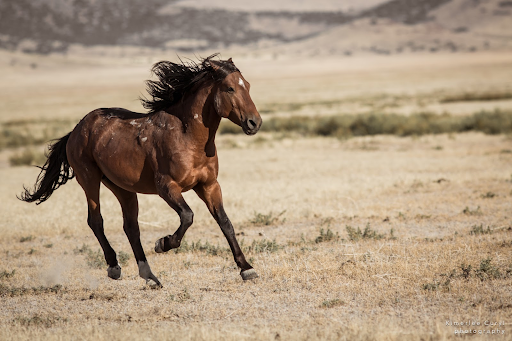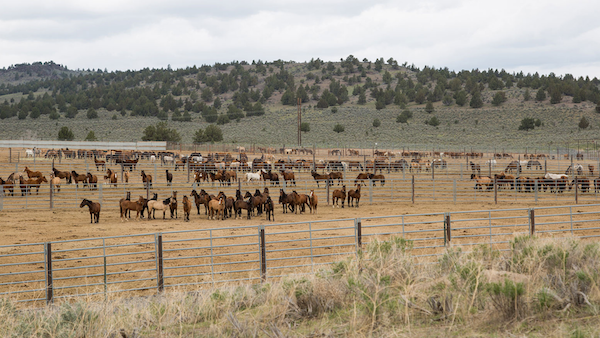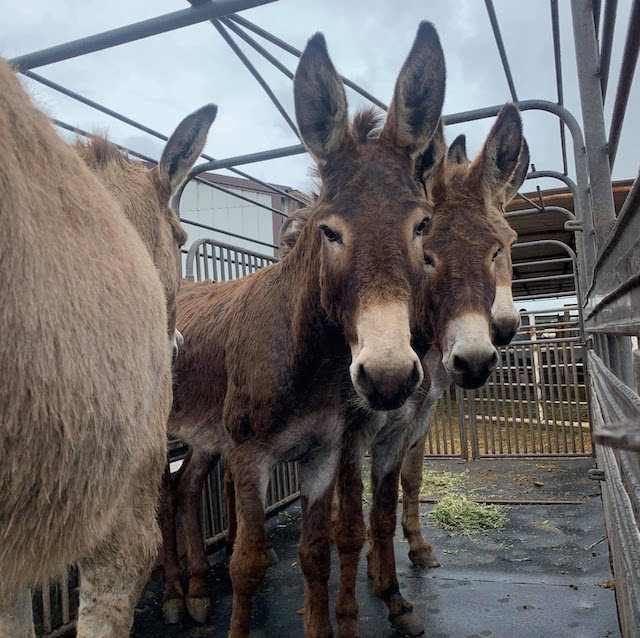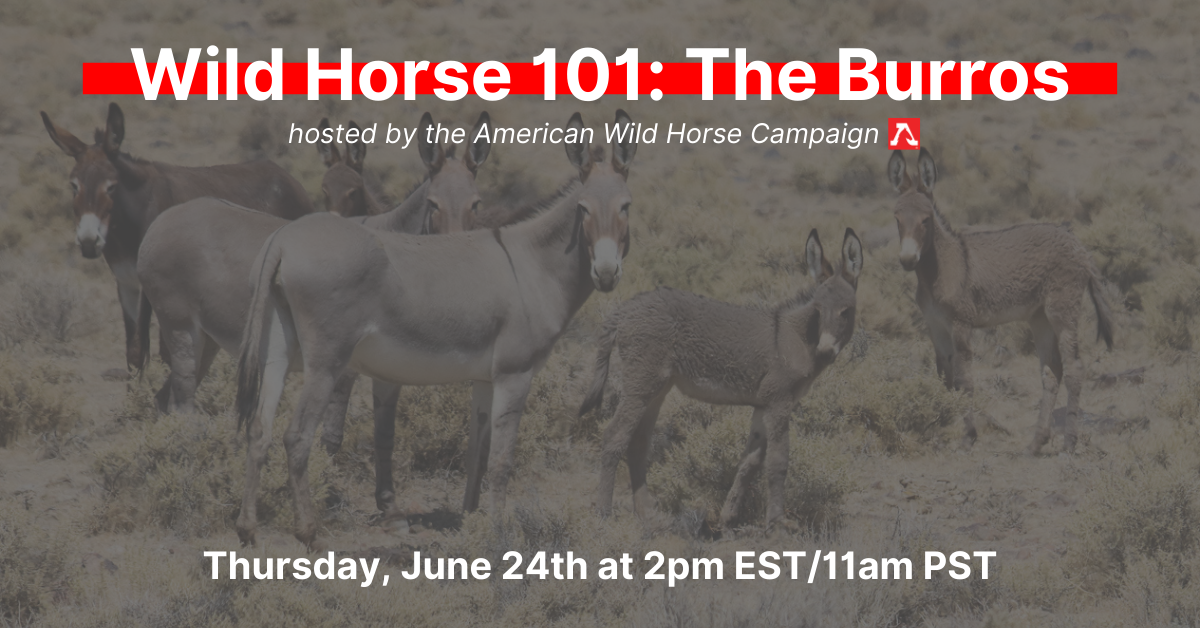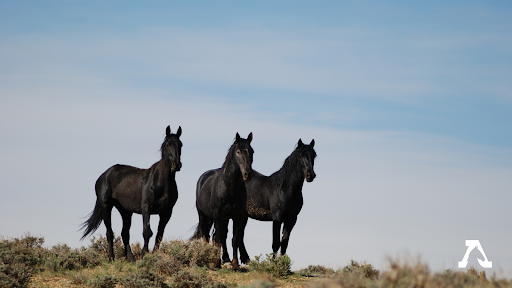
The following is from the American Wild Horse Campaign:
Because of the Bureau of Land Management’s (BLM) use of outdated and unproductive wild horse and burro “management” practices, nearly 60,000 wild horses and burros will be stockpiled in government holding pens and pastures before the end of this fiscal year (Sept. 30). This is the highest number of wild horses and burros ever maintained in the BLM’s holding facilities.
There’s only one place the BLM’s roundup and stockpile system of managing wild horses is heading — it’s the mass slaughter of these cherished animals. Here at AWHC, we are doing everything possible to keep wild horses and burros wild and prevent this horrific outcome. Can you make a donation to the American Wild Horse Campaign today to help us continue our fight in the field, in courts, and on the Hill to protect wild horses and burros?
In the Field
We are not just demanding change, we’re proving that a better way is possible. AWHC’s highly successful fertility control program on the Virginia Range in Nevada has reduced the foaling rate in this historic mustang herd by over 50% in just over two years. The program is proving that humane fertility control is a viable alternative to costly and cruel helicopter roundups and removals — even in large wild horse populations in a large habitat area.
Meanwhile, we continue to send observers to document most helicopter roundups taking place so that the public knows what is happening to our wild horses and burros in these remote areas of the West. We also hold the BLM accountable for the animal welfare violations we commonly see, such as stampeding horses in extreme temperatures, chasing horses in a manner that causes foals to be left behind (then roped and brought in), and capturing too many horses at once in too-small of pens, resulting in traumatic injuries such as broken legs and necks.
Our field work is building a powerful case for change that’s being noticed at the highest levels of Congress and the Administration.
In Court
Our legal team works around the clock to defend wild horses and burros from government actions that violate federal laws and harm these cherished animals. Just this year, we filed suit against the BLM for the continued operation of the failed Adoption Incentive Program (AIP) that is sending far too many of our cherished wild horses and burros into the slaughter pipeline.
Currently, the BLM’s AIP program is an end-run around the Congressional ban on slaughtering wild horses and burros. We’ve documented scores of cases in which adopters are pocketing the $1,000 incentive payments then flipping horses or burros to kill pens as soon as the money clears their bank accounts. Our work even led to an explosive, front-page New York Times report on the program! Yet to date, the BLM has failed to conduct an independent investigation of the AIP or take meaningful steps to address the problem. So, we filed suit against the agency to ensure that this tax-subsidized slaughter program is shut down.
On the Hill
Our Government Relations (GR) team works in collaboration with other advocacy groups and members of Congress to ensure further legislative protections for wild horses and burros. Right now, our team is working to secure language in the Senate Interior Appropriations bill that would allocate $11 million of the BLM’s budget to implement a humane, reversible fertility control program to manage wild horses and burros in the wild.
We’re also urging Congress to direct the BLM to implement on-range management strategies, such as relocating wild horses and burros to other suitable Herd Management Areas (HMAs) to reduce removals and keep these animals on the range where they belong. Earlier this year, we worked with members of the House of Representatives to get similar language passed in the House Interior Appropriations bill, and if this language is secured on the Senate side, it will be a historic legislative win for wild horses and burros! We also advocated hard for a provision in the INVEST Act to ban the transportation of equines to slaughter.
But it’s not just our GR team who is putting in the work! Part of our legislative fight is mobilizing AWHC’s grassroots army to contact the BLM, Forest Service, and Congress when wild horses and burros need help the most. It is because of your support that we are able to achieve significant wins, such as the $11 million for fertility control funding in the U.S. House!
There is so much at stake for wild horses and burros. That’s why we’re fighting back in every way possible to protect the rights and lives of these cherished animals.
Can you make a donation right now to help us continue our fight in the field, in courts, and on the Hill to protect wild horses and burros?
Thank you,
AWHC Team


